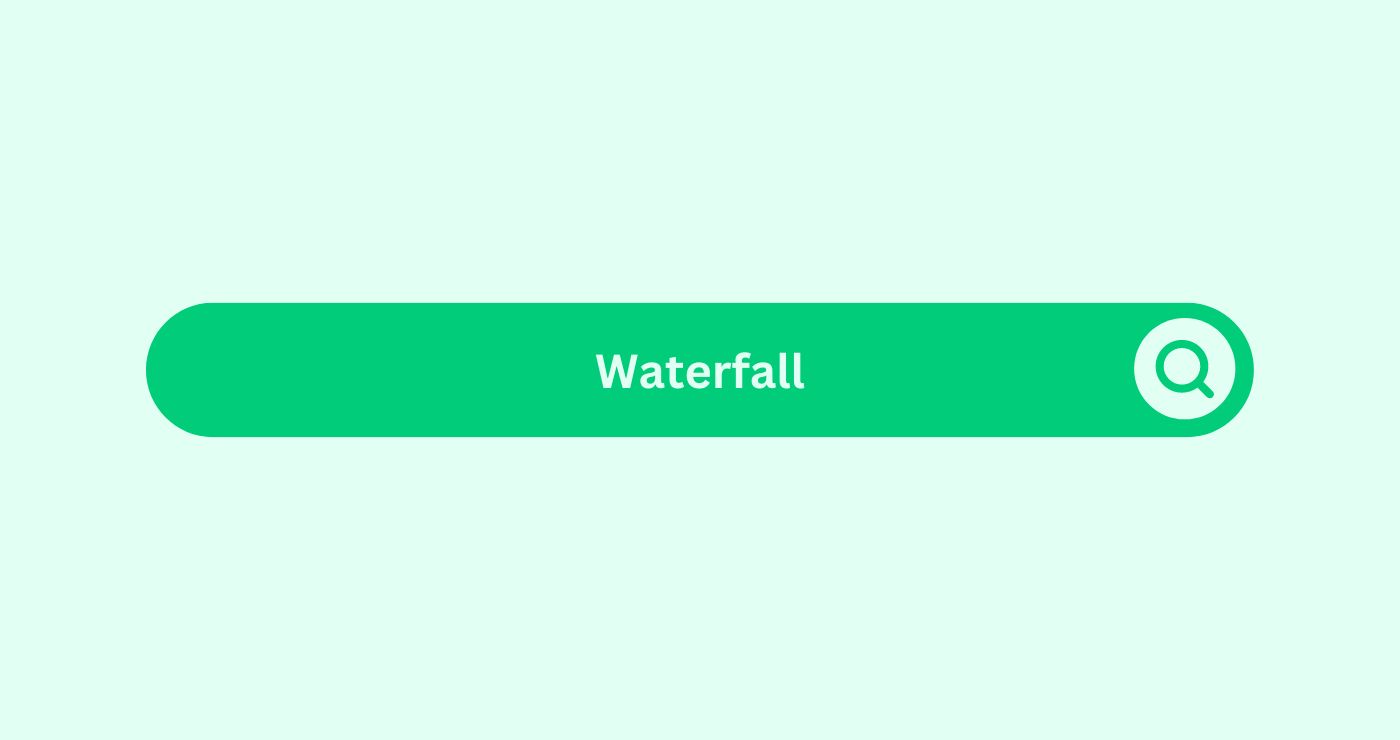Definition
Software development uses the linear waterfall project management technique with sequential steps. It follows a rigid, sequential approach, where each phase must be completed before the next one begins.
Example of how you can use Waterfall
Consider a scenario where an Auckland SEO expert collaborates with a digital marketing agency in Auckland to build a client’s website. Waterfall methodology gathers SEO requirements before designing a website with responsive designDefinition Within the realm of email marketing, responsive d... and fast load speeds for search engine visibility.
Key Takeaways
- Sequential Phases: Waterfall divides project phases to ensure completion before moving on.
- Detailed Documentation: Waterfall phases need detailed documentation for clarity and alignment within the team.
- Minimal Client Involvement: In waterfall projects, clients are involved at the start and end, with few chances for feedback during development.
- Risk Management: Waterfall reduces risks by early issue identification and comprehensive planning.
- Longer Timeframes: Due to their sequential nature, waterfall projects often have longer timeframes and may experience delays if requirements change or unforeseen issues arise during development.
FAQs
What are the main phases of the Waterfall model?
The main phases of the Waterfall model include requirements gathering, design, implementation, testing, deploymentDefinition Deployment is the release of software updates and..., and maintenanceDefinition Maintenance in the SEO space refers to the ongoin....
What are the advantages of using the Waterfall methodology?
Advantages of Waterfall include clear project milestones, well-defined requirements, and structured documentation, which can help in managing large-scale projects.
What are the limitations of the Waterfall model?
Limitations of Waterfall include limited flexibility to accommodate changing requirements, lack of client involvement during development, and potential delays if issues are discovered late in the project lifecycle.
How does Waterfall differ from Agile methodologies?
Waterfall follows a sequential approach, while AgileDefinition Agile is a project management methodology that em... methodologies emphasize iterative development, collaboration, and adaptability to change.
Can Waterfall be used in all types of software projects?
Waterfall is best suited for projects with stable requirements and predictable outcomes, such as large-scale enterprise software development.
What is the role of documentation in the Waterfall model?
Documentation is essential in Waterfall for capturing requirements, design decisions, and testing procedures, ensuring clarity and alignment among team members throughout the project lifecycle.
How does Waterfall handle project changes?
Waterfall is not well-suited for handling project changes, as it follows a rigid sequential approach where changes may disrupt the planned phases and timelines.
What is the significance of the testing phase in Waterfall?
The testing phase in Waterfall is crucial for validating the software against the specified requirements and ensuring that it meets quality standards before deploymentDefinition Deployment is the release of software updates and....
How does Waterfall address project risks?
Waterfall aims to mitigate project risks through comprehensive planning, documentation, and early identification of potential issues during the requirements and design phases.
Is Waterfall still widely used in software development?
While AgileDefinition Agile is a project management methodology that em... methodologies have gained popularity, Waterfall is still used in certain industries and projects where requirements are stable and well-defined.




